I was around a dinner table a few nights ago with friends I hadn’t seen in weeks, catching up on what had been going on in my absence. One friend had just been to an exhibit of Lee Miller’s photographs. “She trending like mad,” she told me. Another piped up, “There’s a movie out about her now, too, that I want to see.” And from there the conversation was all about Lee Miller, someone whom I’d known of but had never really thought much about. When I got home, I opened my computer and went down a rabbit hole.
Lee Miller (1907–1977) was, of course, the famous American photographer who started off as a model in New York City and later became part of the Surrealist movement in Paris in the 1920s and 30s, rubbing shoulders and making art with the likes of Picasso, Jean Cocteau, and Man Ray (whose lover and muse she was also). She worked as a portrait photographer in New York City afterward, capturing the faces and poses of high-society women, then went to London to photograph fashion for Vogue magazine. Doesn’t that sound too glamorous for words?
Well, then everything changed.
During the Second World War, Miller asked Vogue Magazine to allow her to work as a war correspondent, and was granted permission. She left behind in England a husband and the studios full of models in luxurious clothes, and fearlessly pushed her way to the front lines, despite it being next to impossible for a woman to have such access. She courageously covered everything from terrifying makeshift hospital scenes, to bombardements in St. Malo, to the liberation of Paris, to the liberation of concentration camps, including Dachau. Imagine the extraordinary shift that Miller’s photography took — and her life, too — going from capturing beauty to documenting the most awful horrors that war could present. She didn’t just take the pictures, either; she made sure they were shoved in people’s faces, however disturbing.
Miller stayed until the end of the war. On April 30, 1945, Adolf Hitler committed suicide. That same day, Miller was in Munich, along with a fellow American photojournalist named David E. Scherman. They managed to bribe their way into Hitler’s private apartments, where Scherman shot a now famous picture of Miller taking a bath in Hitler’s tub. Before leaving the apartment, she stole a silver tray which would accompany her into her next incarnation.
That incarnation saw Miller back in England with her husband, the surrealist artist Roland Penrose, living “peacefully” in the country and suddenly taking up cooking and hosting with a vengeance. She accumulated over 2,000 cookbooks, was a ravenous collector of kitchen gadgets, trained at the Cordon Bleu, and applied her skills to inventing surrealist dishes like “chicken upside-down cake” and a dessert of candied oranges in variously-coloured syrups with crystallized flowers that she named “Persian Carpet.” Cooking became for Miller not just a new creative outlet, but also a way of trying to block out the unspoken horrors of her past. (She suffered extreme PTSD, although that would have been undiagnosed in her day.) Her dinner table became her refuge, a place of peace, a place where she could escape her inner torment by gathering friends for feasts and laughter.
That dining table is why Miller is trending right now. The British actress Kate Winslet bought it at an auction and, sitting at it, according to her, found herself wondering, “Why hasn’t anyone made a movie about Lee Miller?” It was Winslet herself who ended up plunging into years of research and, ultimately, making and starring in that movie, which is in theatres now. It’s called Lee. I saw it two nights ago. I also went to see the exhibit of Lee Miller’s photographs that my friend told me about over that initial dinner that brought up Miller in the first place. And I’ve been reading articles sent to me by my other friend after that dinner. Here are a few you might find interesting:
https://www.theage.com.au/lifestyle/culinary-surrealist-20070619-ge55kx.htm
https://www.anothermag.com/design-living/10273/how-lee-miller-reinvented-herself-as-a-gourmet-chef
https://www.worldofinteriors.com/story/lee-millers-kitchen-farleys-house-east-sussex
That same friend, artist Shelley Adler, painted these portraits of Lee Miller a few years ago.
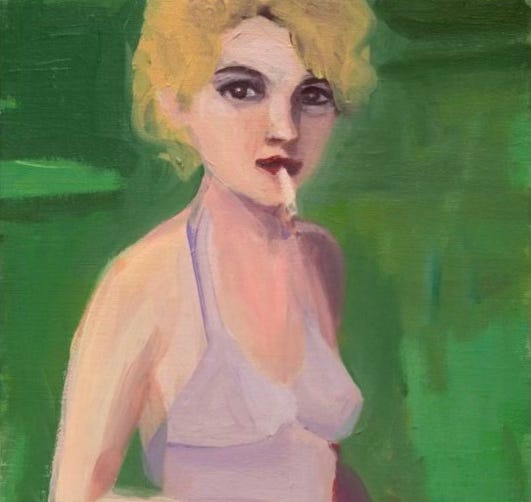
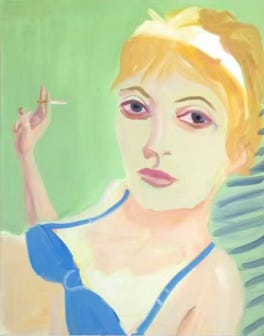
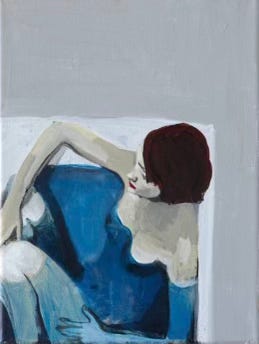

Here are two interviews with Kate Winslet about the making of her film:
So, that’s where I’ve allowed by head to spend some time this week, and in doing so I’ve made the better acquaintance of a truly extraordinary woman. All that — which is what I ultimately wanted to highlight — thanks to couple of dining tables.
xo,
Laura
P.S. Lee Miller’s granddaughter, Ami Bouhassane, has written a book about the role of cooking in Miller’s life called Lee Miller: A life with food, friends and recipes. I don’t have it, at least not yet, but hearing about surrealist cuisine reminded me of my old Food Network pal, Bob Blumer, who wrote a book called The Surreal Gourmet: Real food for pretend chefs. You can find some of his kooky, inventive, surreal — and tasty, too — recipes on his website.



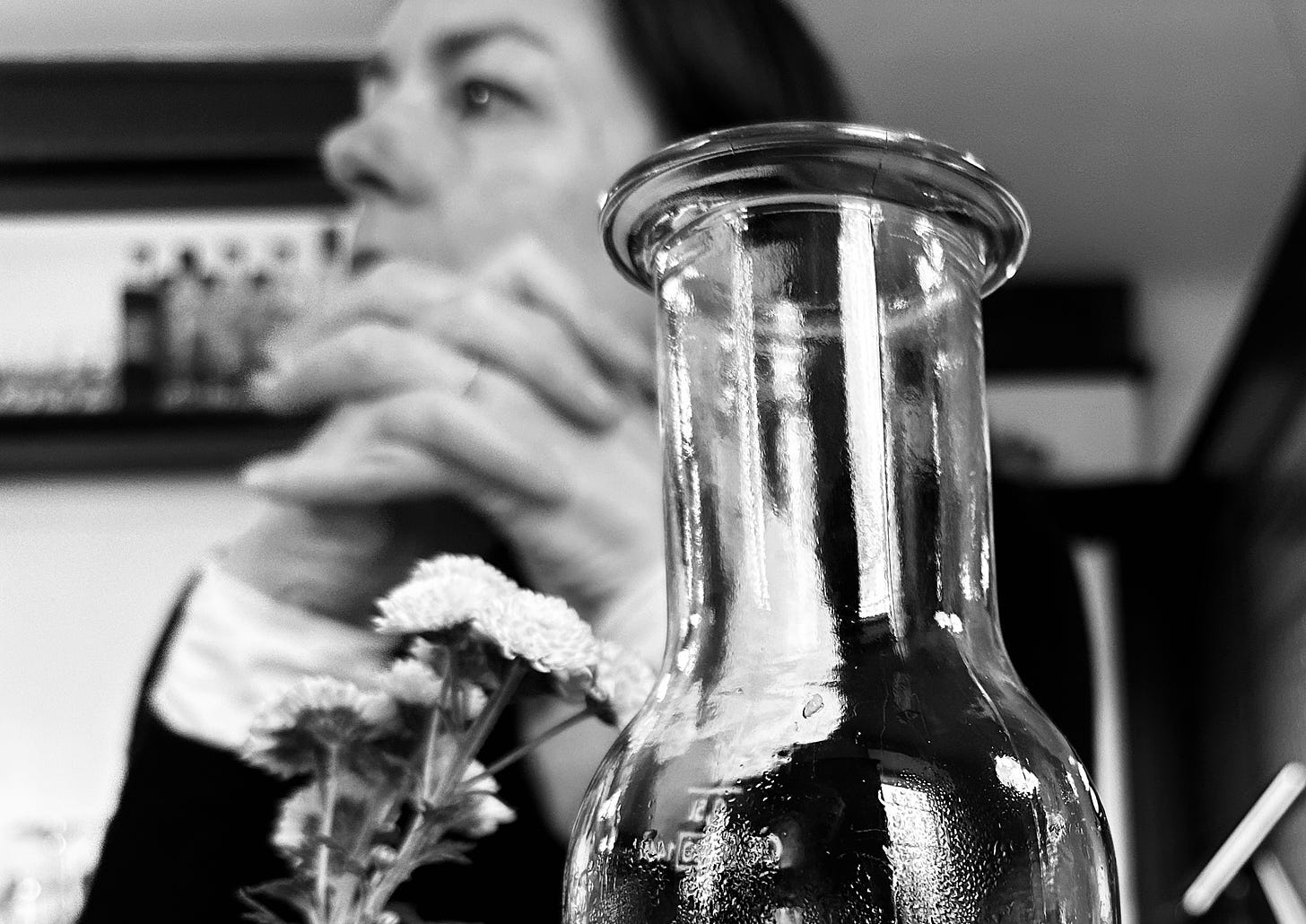

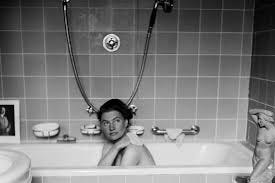


I enjoyed reading your post. I regularly watch Christiane Amanpour's show so saw her interview with Kate Winslet about her new movie, Lee, and plan to go see it. The Sunday Times interview that you posted was very interesting as well. Lee Miller is definitely an extraordinary woman that everyone should know about. Her time for the limelight is long overdue.
Wow. What an extraordinary life! Looking her up, thanks for sharing!